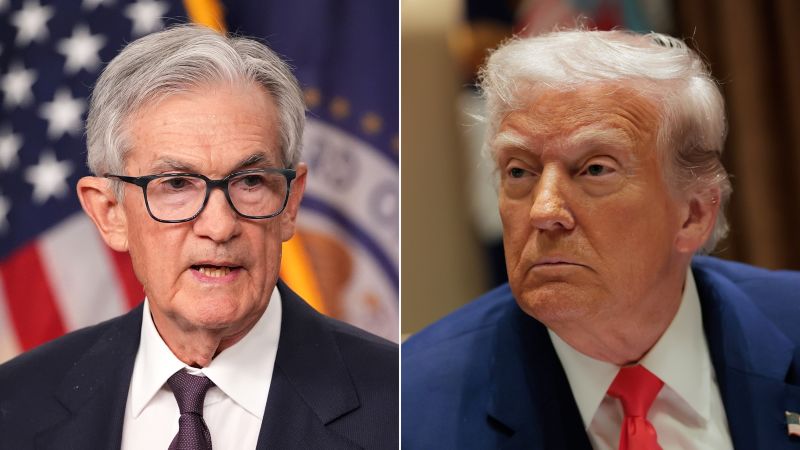In recent developments surrounding the U.S. economy, President Donald Trump has taken a notable stance against Federal Reserve Chair Jerome Powell, attributing significant financial losses to his leadership. Specifically, Trump claims that Powell’s decision not to lower interest rates has cost the country “hundreds of billions of dollars.” This assertion highlights Trump’s increasingly vocal criticism of the Federal Reserve and its policies, which he believes are detrimental to the U.S. economy.
In a recent post on Truth Social, Trump expressed his frustration in bold terms, stating, “You have cost the USA a fortune and continue to do so.” He called for a substantial reduction in interest rates, arguing that if the Federal Reserve were executing its duties correctly, “our Country would be saving Trillions of Dollars in Interest Cost … We should be paying 1% Interest, or better!” His remarks come at a time when the nation is intensely aware of the rising costs associated with interest payments on federal debt, making his claims even more resonant in public discourse.
Trump’s focus on interest rates is particularly relevant given the alarming growth in interest payments tied to the national debt. Reports indicate that interest payments for the current fiscal year are projected to approach $1 trillion, marking a historical milestone. This comes after the passage of what Trump refers to as the “big, beautiful bill,” which is expected to exacerbate the national deficit by over $3 trillion over a decade while potentially pushing interest rates higher due to accumulated federal debt.
Despite Trump’s push to pressure the Fed into reducing rates, experts warn that such actions may not yield the intended relief from interest payment burdens. The federal funds rate plays a role in influencing interest rates, but it is just one of several factors that determine how interest is applied to the mixture of short and long-term Treasury securities held by the government. Shai Akabas, a vice president at the Bipartisan Policy Center, noted, “It seems to be an easier lever to pull for those who want to impact either interest costs on the federal debt or economic growth. But it doesn’t mean that action by the Fed will result in the outcome the president or others may want.”
Moreover, the rapid increase in interest costs is undeniably correlated to the national debt trajectory and the Federal Reserve’s efforts to combat inflation over recent years, which had historically low interest rates. For instance, the U.S. paid around $346 billion in interest payments in fiscal 2020, and projections indicate that this figure could rise to over $1 trillion in the next fiscal year, a striking increase that underscores the financial reality facing the government.
Interestingly, interest payments have now ascended to become the second-largest expenditure category in the federal budget, outpacing both Medicare and defense spending, with the only larger budget item being Social Security. According to Akabas, about 18 cents of every tax dollar is currently allocated toward interest payments, a figure expected to rise to approximately 25 cents by the decade’s end.
Despite the potential allure of lowering the federal funds rate, experts caution against its anticipated effects on long-term borrowing. For instance, a significant reduction in rates may not alleviate the costs associated with 10-year or 30-year Treasury bonds, and could, in fact, aggravate them. Analysts like Marc Goldwein express skepticism about the Federal Reserve’s capability to mitigate longer-duration rates, emphasizing that there’s “no guarantee that the Fed cutting rates will reduce interest payments at all.”
Experts also suggest that if Trump genuinely aims to alleviate interest payment burdens more effectively, he should focus on lowering the annual deficit. Such measures, however, could require politically sensitive adjustments to both taxation and governmental spending, which could be challenging in the current political climate. Trump’s agenda, while proposing historic cuts to federal spending on safety nets, is overshadowed by sweeping tax reductions that are likely to further inflate the annual deficit.
Goldwein succinctly articulates the crux of the matter, stating, “If your concern is the hundreds of billions of dollars we’re adding to the deficit from higher interest costs, the solution is to enact policies that are deficit reducing, not deficit increasing.” This highlights the complexity and interconnectedness of fiscal policy and economic management amid rising interest obligations and a growing national debt.











